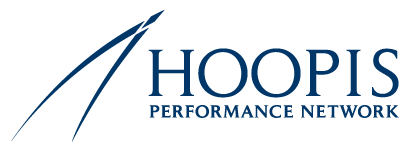Developing Engaging Content in Your LMS
- Hoopis Performance Network

- Aug 12, 2024
- 2 min read

The million-dollar question on the minds of many of our clients is: “How do we increase adoption of our training management system (LMS) and create engaging content to drive activity?” Hundreds of thousands, if not millions of dollars are invested in building or licensing training management systems. And applying an “If we build it, they will come” strategy always fails.
You must develop engaging content that makes members of your organization (internal and business employees) interested in consuming the content. If you can develop highly engaging content, they will come back for more and more. So how do you go about achieving this?
Listen to What Your Stakeholders Want
Many times, organizations will develop content to check the corporate list of mandates to complete their LMS. There are definitely internal products and processes where training content will need to be created to narrow down the list. However, when was the last time you surveyed the sales team to determine what they would prefer in terms of content? What are your main platforms or most popular breakout sessions at your conferences? Have you captured those topics on video to distribute as content?
Developing Contemporary Content
In today’s fast-paced and ever-changing world, content needs to be updated regularly. Since the role of most training departments is not solely to develop content, it becomes very challenging to continually develop contemporary content. Especially with today’s compliance standards and the problems that worker regulations present.
Therefore, strategically partner with content providers that ensure the most up-to-date content is delivered to your key teams. Contemporary content will increase engagement, especially among Millennials. And this allows the head office to focus on developing content for products and processes that do not need to be updated as frequently, since they are considered more “stable.”
Feature Designed to Drive Adoption
Hoopis Performance Network has sought feedback from our 50,000+ subscribers over the years on how they want to consume content. These are agency managers and advisors telling us directly what would drive adoption. Therefore, we have developed functionality in our learning platforms based on this feedback.
For example, managers want to be able to prescribe content to advisors and easily verify consumption of that content. Advisors want access to a personalized dashboard for their learning experience where they can save specific content much like a Spotify or iTunes playlist. Strategic partnering with content providers that offer agile platform functionality greatly increases the value of an existing LMS through greater adoption
Organizations have two options: incorporate an LMS that provides this contemporary, agile functionality (which most consider to be too cumbersome). Or don’t bother linking to a third-party content platform that is privately labeled by your company and allows seamless access to certain content and functionality designed to drive adoption.
Conclusion
With short attention spans and busy schedules, getting stakeholders to consume content in your LMS has become a major challenge. By soliciting feedback on what content their business teams are looking to consume, keeping the content contemporary, up-to-date, and developing functionality that makes the content easier to consume, businesses will be more likely to increase adoption within their LMS.



